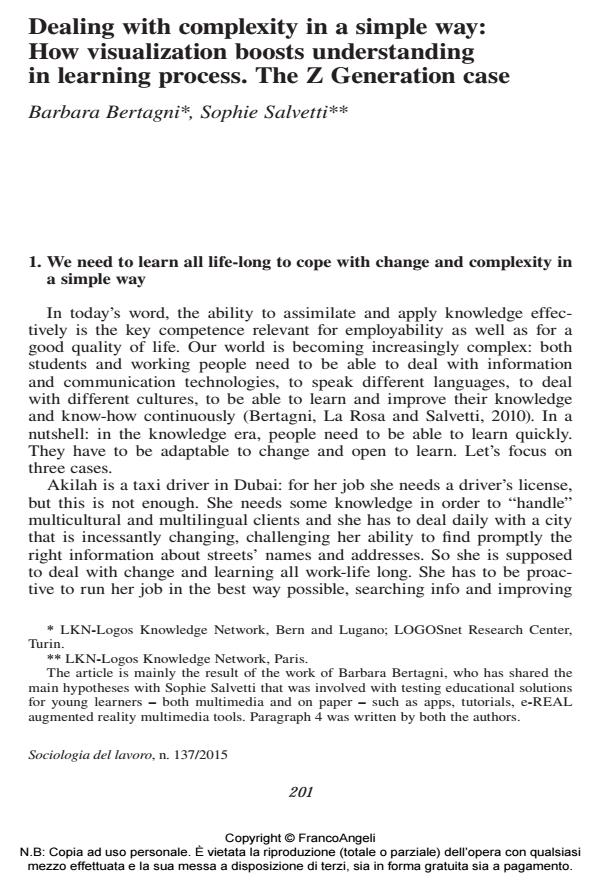Dealing with complexity in a simple way: How visualization boosts understanding in learning process. The Z Generation case
Journal title SOCIOLOGIA DEL LAVORO
Author/s Barbara Bertagni
Publishing Year 2015 Issue 2015/137
Language English Pages 15 P. 201-2015 File size 189 KB
DOI 10.3280/SL2015-137012
DOI is like a bar code for intellectual property: to have more infomation
click here
Below, you can see the article first page
If you want to buy this article in PDF format, you can do it, following the instructions to buy download credits

FrancoAngeli is member of Publishers International Linking Association, Inc (PILA), a not-for-profit association which run the CrossRef service enabling links to and from online scholarly content.
In today’s word, the ability to assimilate and apply knowledge effectively is a key competence very relevant for employability. In the knowledge age, people need to be able to learn quickly and incessantly. As educators, we have to rethink tools, methodologies, setting and pace in education in order to really help people improving their competencies all life-long. Interactive edugraphics combining knowledge visualizations, illustrations, text, and images together are an interesting and engaging way to effectively facilitate learning people from different fields, cultures, cognitive styles, level of knowledge. Visualization is a powerful approach both for general education and for training. Especially when we face the education of the young people growing up in the digital word, visualization is strategic - as highlighted by the case of a Zed Generation girl, Sophie (that also co-authored a paragraph of the present article). The educational approach for the 21st century needs to be more learner-centered, interactive, customizable, blended - combining activities technology-based and experiences in a team, like in the flipped classroom. In such a scenario, augmented reality tools are becoming very relevant - like in the e-REAL labs that are briefly introduced.
Keywords: Z Generation, e-REAL lab, interactive edugraphic, knowledge visualization, flipped classroom, visual learning
- The Social Genres of Comics Valentina Cappi, Emanuele Leonardi, pp.187 (ISBN:978-3-031-99184-4)
Barbara Bertagni, Dealing with complexity in a simple way: How visualization boosts understanding in learning process. The Z Generation case in "SOCIOLOGIA DEL LAVORO " 137/2015, pp 201-2015, DOI: 10.3280/SL2015-137012